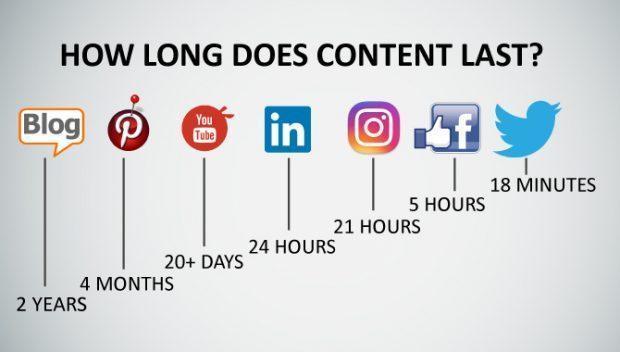قائمة المحتويات
النشاط الرقمي
قد غيّر النشاط الرقمي طريقة تنظيم الأحداث والاحتجاجات والحركات، وساعد على حشد الداعمين ورفع الوعي بمجموعة متنوعة من القضايا. ولكن يرى منتقدوه أن الناس قد يشعرون بأنهم يحققون فارقًا، بينما في الحقيقة لم يفعلوا شيئًا يذكر.
ما هو النشاط الرقمي؟
النشاط الرقمي هو عندما يتم استخدام الأدوات الرقميّة مثل الإنترنت، وسائل التواصل الاجتماعي، البريد الإلكتروني، والهواتف المحمولة للتعبئة والعمل السياسي وتحفيز التغيير. يعود ظهوره بشكل أو آخر إلى التسعينات واستمر بنموه مع ظهور ويب 2.0 وانتشار وسائل التواصل الاجتماعي. من المرجح اليوم أنه بصدارة أساليب النشاط التي تتبادر إلى الذهن بسبب سرعتها وسهولتها في التواصل مع الناس على نطاق عالمي.
الأدوات والموارد
هناك تنوّع هائل في الأدوات المستخدمة في النشاط الرقمي، والتي تتغيّر باستمرار مع تطور التقنيات.
العرائض الالكترونية:
مواقع مثل Change.org و 38 degrees.org.uk تسمح لأي شخص بإنشاء عريضة يمكن مشاركتها بسهولة للحصول على توقيعات تعزّز من مكانة منظمتهم أو حركتهم.
وسائل التواصل الاجتماعي:
المنصات التي تضم ملايين المستخدمين حول العالم مثل فيسبوك، تويتر، ويوتيوب، أثبتت فعاليتها في نشر الرسائل ورفع الوعي وجذب الدعم لقضايا وحركات ربما تم تجاهلها سابقًا في وسائل الإعلام التقليديّة. عبر استخدام الهاشتاغ على وسائل التواصل الاجتماعي يمكن لأي شخص المساهمة في حوار جماعي، حيث يُستخدم الهاشتاغ كأداة رقميّة بشكل متكرر لنشر الرسائل. تم تنظيم احتجاجات الربيع العربي عام 2011 جزئيًا عبر وسائل التواصل الاجتماعي.
الهواتف المحمولة:
برهنت الهواتف المحمولة أنها مفيدة للغاية في النشاط الرقمي. الآن بإمكانك التبرّع فورًا لمنظمة ما عبر الرسائل النصيّة. توفّر الهواتف الذكيّة الوصول السريع إلى الإنترنت ووسائل التواصل الاجتماعي، كما تم إدماج كاميرا في جميع الهواتف المحمولة تقريبًا، مما أدى إلى تغييرات كبيرة في كيفية استجابة الناس للأحداث العالميّة. يتمتع الناس الآن بالقدرة على توثيق الأدلة ومشاركتها بشكل فوري عبر الإنترنت، مثل توثيق عنف الشرطة.
المدوّنات:
تُعدّ المدوّنات صحافة غير خاضعة للرقابة حيث يمكن لأي شخص أن يُطلق مدوّنة ويباشر الكتابة حول أي موضوع ينتقيه، مما يوفّر وسيلة غير منقحة للتواصل طويل الأمد وقد تم استخدامها في العديد من حملات النشاط الرقمي.
منصّات التمويل الجماعي:
تمكّن منصّات مثل Kickstarter و Indiegogo أي شخص من إطلاق حملة تمويل رقميّة لمشروعه أو حملته.
Accessible in different global climates
Perhaps the most obvious advantage of digital or online activism today is that it is accessible during a global pandemic. Countries all over the world have had to implement restrictions and lockdown measures to prevent the spread of COVID-19. Traditional methods of activism involve social contact in the forms of mass gatherings, door-knocking, and protests. Being able to collect signatures with an online petition shared via social media or email allows people to abide by the social distancing measures and restrictions put in place by governments.
Getting the message out
One of the biggest advantages of digital activism is the ability to connect with a large community and potentially globalise campaigns. Digital tools offer instant connectivity to a potentially huge audience to spread messages and campaigns and social media platforms like Facebook and Twitter allow disparate groups to mobilise faster than ever before. Beyond this, it also enables anyone with access to the internet to have a platform for their voice.
Exclusion
While digital activism lends itself to being readily accessible to huge numbers of people on a global scale, there are of course a number of factors that affect who can get involved and how, particularly in parts of the world where internet access is limited, digital literacy skills are low or where online activity is strictly monitored.
Speed and Half-Life
The online world is characterised by speed so updates need to be relevant and timely. The term half-life in regards to digital content refers to the time it takes for a post to make half its overall impressions, and it differs depending on the platform. Our modern culture of 24 hour news, updates at our fingertips and the speed at which we hear of, learn about and move on from topics, news stories and issues often means that an issue or campaign can be trending across the web one day and vanish the next. But advocacy takes time, the building of strong relationships, and lasting impact.

Clicktivism, Opportunism & Echo Chambers
Critics argue that online activism – sometimes referred to as “clicktivism” or “slacktivism” – is lazy and ineffective compared to traditional methods of activism. It is suggested that sharing a hashtag or an image on social media can make the user feel like they’ve contributed to a cause, when in reality they have had little impact.
“Virtue Signalling” is a term often used to describe people or organisations and companies that jump on the bandwagon of a trending cause or movement to score virtual brownie points and then do not follow it up with an action. There is also an issue with opportunism in that even if intentions are good, individuals or organisations hijack a trending hashtag and flood the online space with their own messaging. This can be potentially damaging as the clarity and point of the original message can get lost in a sea of posts.
Another issue with online activism is that one cannot necessarily see the bigger picture because of their echo chamber. People typically connect with likeminded people online, and therefore tend to only see content that they generally agree with, rather than any alternative views. This can mask the reality of the situation as well as reinforce or amplify someone’s beliefs.
Online activism, offline impact
Clearly, the main criticism of digital activism is that people can get the same feeling of doing a good deed and score brownie points while actually doing very little. It takes little effort to share a post on social media in solidarity with an organisation or movement.
Sharing the message and raising awareness is a critical part of activism but it needs to translate into action to drive real change. Digital activism needs to be used in conjunction with traditional forms of activism to be successful. A great example of this in action is the climate strikes that took place in September 2019. Rallying behind Greta Thunberg and Fridays for Future, millions of people all over the world were able to use online platforms to mobilise and organise strikes and protests to address the climate crisis, demanding a commitment to action on climate change from the world’s governments.
Online activism needs to be employed before, during and after on-the-ground action for full impact and to ensure that the movement is not buried under new updates and stories.
Please note: HAD do not endorse any particular view of any specific group/cause.
Follow HAD on Facebook, LinkedIn, Twitter and Instagram
Written by Romey Watters
Digital Marketing Officer
المنشورات ذات الصلة





